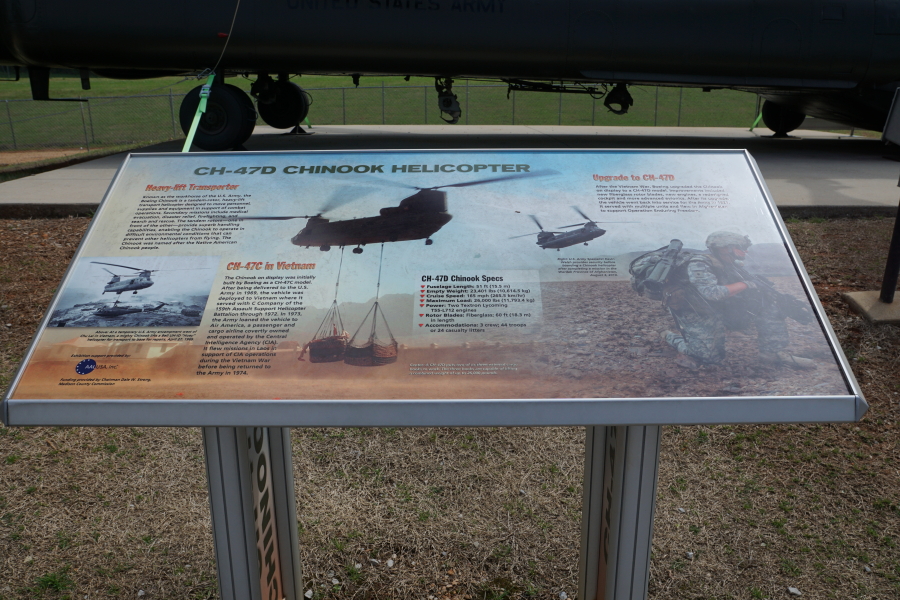| Prev |
heroicrelics.org U.S. Space & Rocket Center Site Index Chinook Helicopter Gallery |
Next |
dsce1680.jpg
One of the signs accompanying the helicopter; this one is located along the aircraft's port side.
It reads
CH-47D Chinook Helicopter
Heavy-lift Transporter
Known as the workhorse of the U.S. Army, the Boeing Chinook is a tandem-rotor, heavy-lift transport helicopter designed to move personnel, supplies, and equipment in support of combat operations. Secondary missions include medical evacuation, disaster relief, firefighting, and search and rescue. The tandem rotors—one in front of the other—provide superb handling capabilities, enabling the Chinook to operate in difficult environmental conditions that can prevent other helicopters from flying. The Chinook was named after the Native American Chinook people.
CH-47C in Vietnam
The Chinook on display was initially built by Boeing as a CH-47C model. After being delivered to the U.S. Army in 1969, the vehicle was deployed to Vietnam where it served with C Company of the 159th Assault Support Helicopter Battalion through 1972. In 1973, the Army loaned the vehicle to Air America, a passenger and cargo airline covertly owned and operated by the Central Intelligence Agency (CIA). It flew missions in Laos in support of CIA operations during the Vietnam War before being returned to the Army in 1974.
CH-47D Chinook Specs
- Fuselage Length: 51 ft (15.5 m)
- Empty Weight: 23,401 lbs (10,614.5 kg)
- Cruise Speed: 165 mph (265.5 km/hr)
- Maximum Load: 26,000 lbs (11,793.4 kg)
- Power: Two Textron Lycoming T55-L712 engines
- Rotor Blades: Fiberglass; 60 ft (18.3 m) in length
- Accommodations: 3 crew; 44 troops or 24 casualty litters
Upgrade to CH-47D
After the Vietnam War, Boeing upgraded the Chinook on display to a CH-47D model. Improvements included new fiberglass rotor blades, new engines, a redesigned cockpit and more advanced avionics. After its upgrade, the vehicle went back into service for the Army in 1991. It served with multiple units and flew in Afghanistan to support Operation Enduring Freedom.

| Time picture taken | Sun Apr 14 14:27:46 2024 |
| Location picture taken |
Rocket Park U.S. Space & Rocket Center Huntsville, AL |
| Prev |
heroicrelics.org U.S. Space & Rocket Center Site Index Chinook Helicopter Gallery |
Next |